Introduction
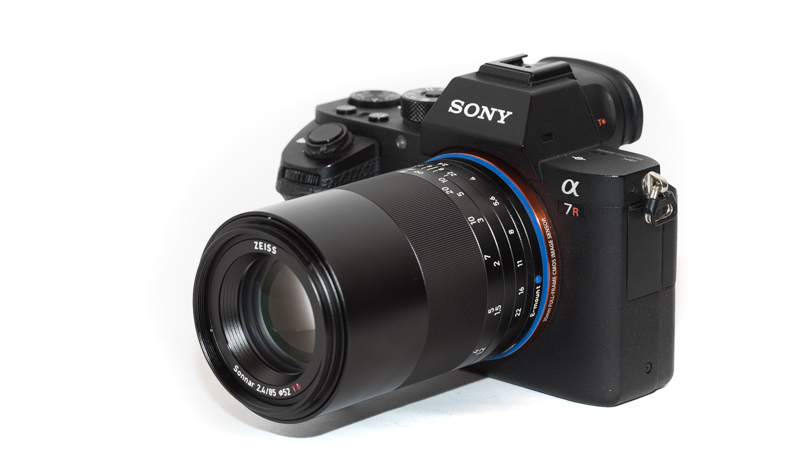
The high price tag combined with the modest maximum aperture put many potential buyers off. Nonetheless personally I have used this lens regularly for almost two years now and thought it is time to share my experience in this long-term review.
Last Update: 08/03/18: long time experiences after ~2 years of usage added
Sample Images
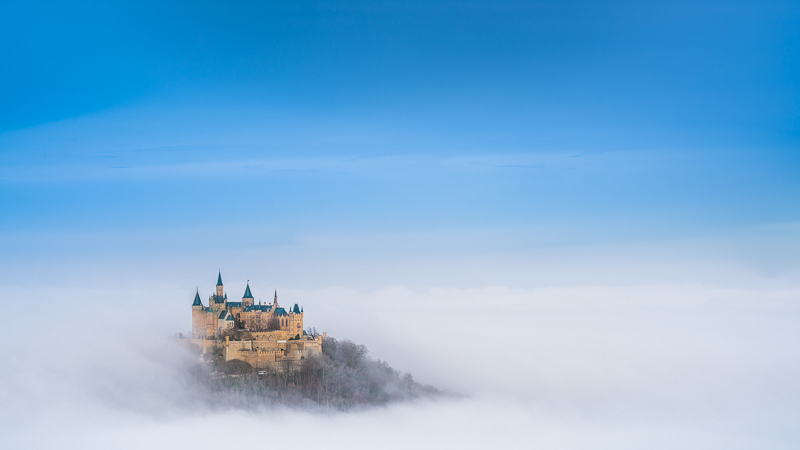
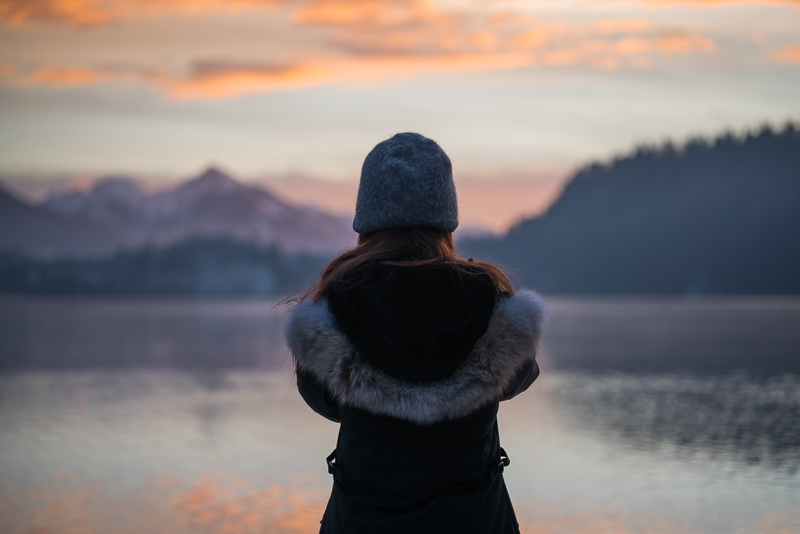
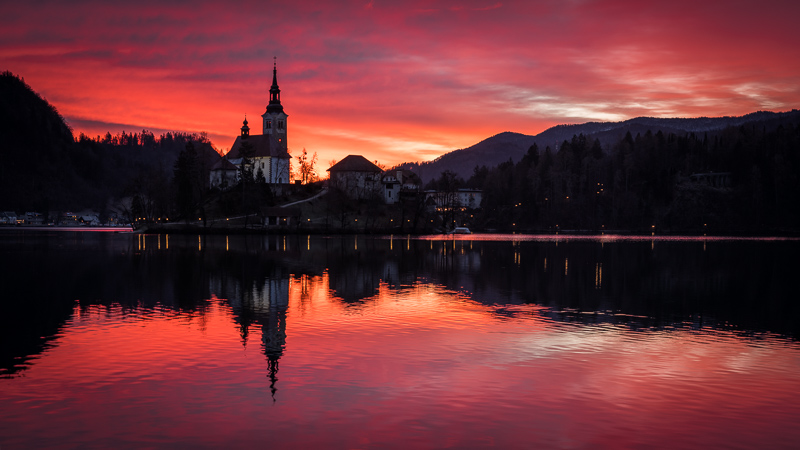
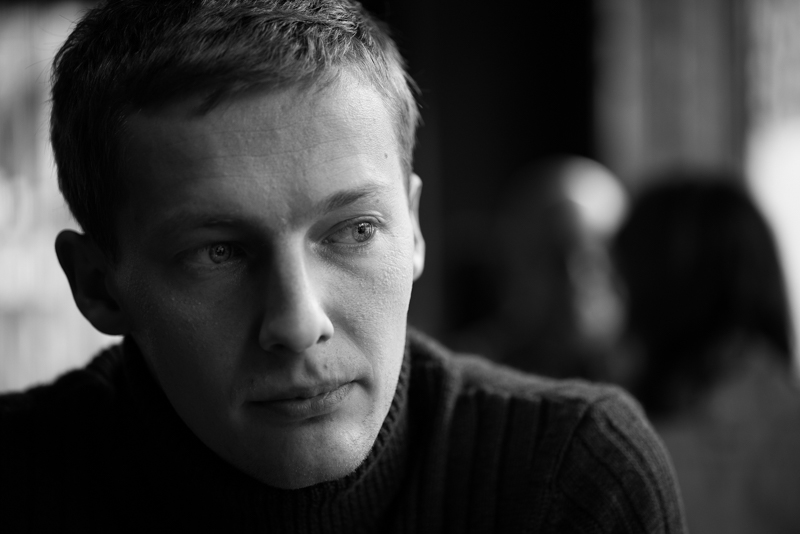
Specifications / Version History
The Zeiss Loxia 85mm 2.4 is the longest lens in the Loxia lineup. The other ones are the 21mm 2.8, 25mm 2.4, 35mm 2.0 and 50mm 2.0. To my knowledge this is the first 85mm with a maximum aperture of 2.4 made by Zeiss. It has the following specifications:
-
- Diameter: 62.5 mm
- Field of view: 28.63° (diagonally)
- Length: 94.8 mm
- Weight: 594g
- Filter Diameter: 52 mm
- Number of Aperture Blades: 10 (straight)
- Elements/Groups: 7/7
- Close Focusing Distance: 0.8 m
- Maximum Magnification: 1:7.2
- Mount: E-mount
You may also have a look at Zeiss’ official page.
You can get this lens on amazon.com | amazon.de | B&H | ebay.com | ebay.de (affiliate links) for $1399/1399€ (new)
Handling / Build Quality
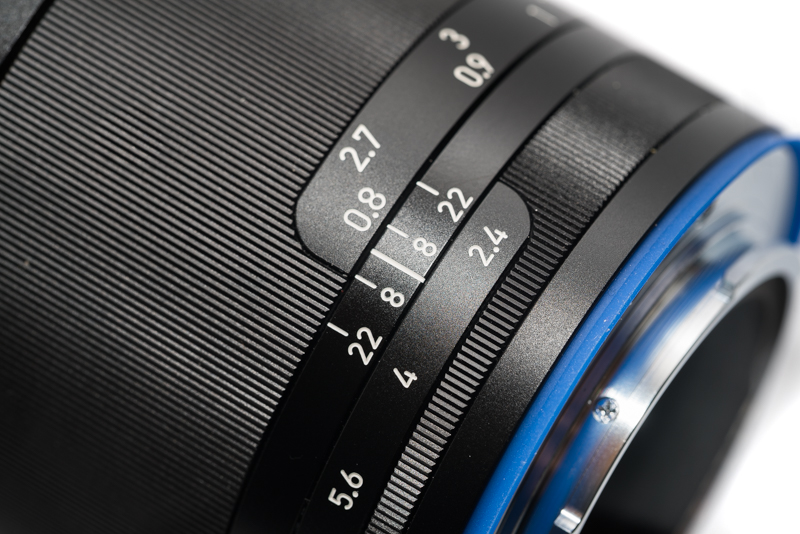
The build quality of the Loxia is very nice and the most part of the lens is made of metal, but with nearly 600g it is also much heavier than the other Loxia lenses. There is also a blue rubber gasket at the rear of the lens, albeit there is no E-mount camera body with true weather/dust resistance available to date.
The focus ring has just the right resistance and it takes ~220° from infinity to 0.8 m. This is great for setting precise focus, but it will also take a bit of time to go from infinity to MFD.
The aperture ring has third-of-a-stop click-stops and turns about 120° which is a little more than I prefer as it takes quite some time to go from f/2.4 to f/11. One can also “de-click” the aperture ring to make it stepless which I think is mostly interesting for filming purposes. As is the case with most Loxia lenses, infinity is a bit before the mark.
There are almost no non moving parts to grab to mount or unmount the lens, if this is something that may bother you have a look at the Loxia Lens-Grip from PocketPano.
There is also another feature: when turning the focus ring the camera automatically zooms in but to be honest I found this behaviour to be slowing down my shooting (as I prefer to move the box first and then zoom in), so I turned it off in the camera menu.
The included hood is also mostly made of metal and quite large.
Vignetting
light falloff
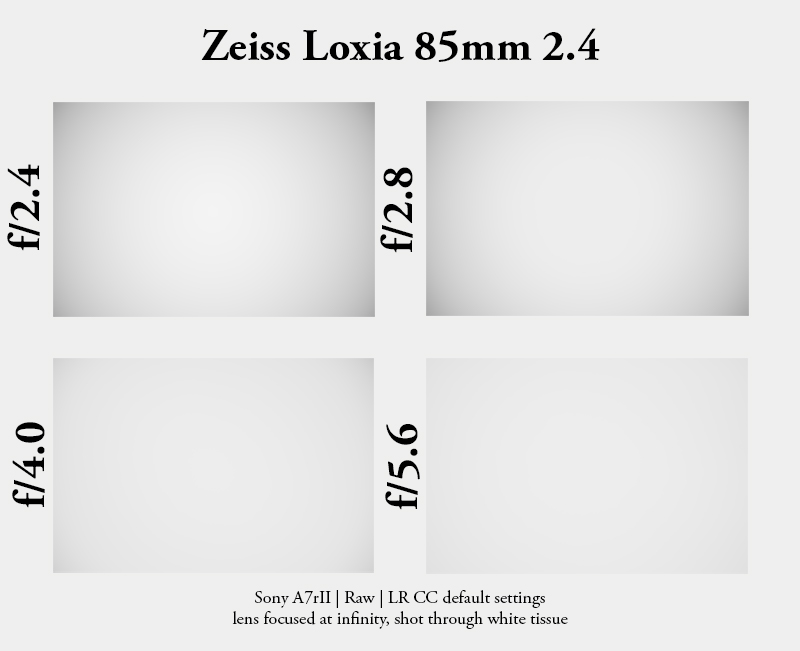
Wide open there is visible vignetting of roughly 1.9 EV, stopped down to f/4.0 it is merely ~0.8 EV and from f/5.6 (~0.4 EV) onwards negligible. There is also Lightroom profile for correcting this.
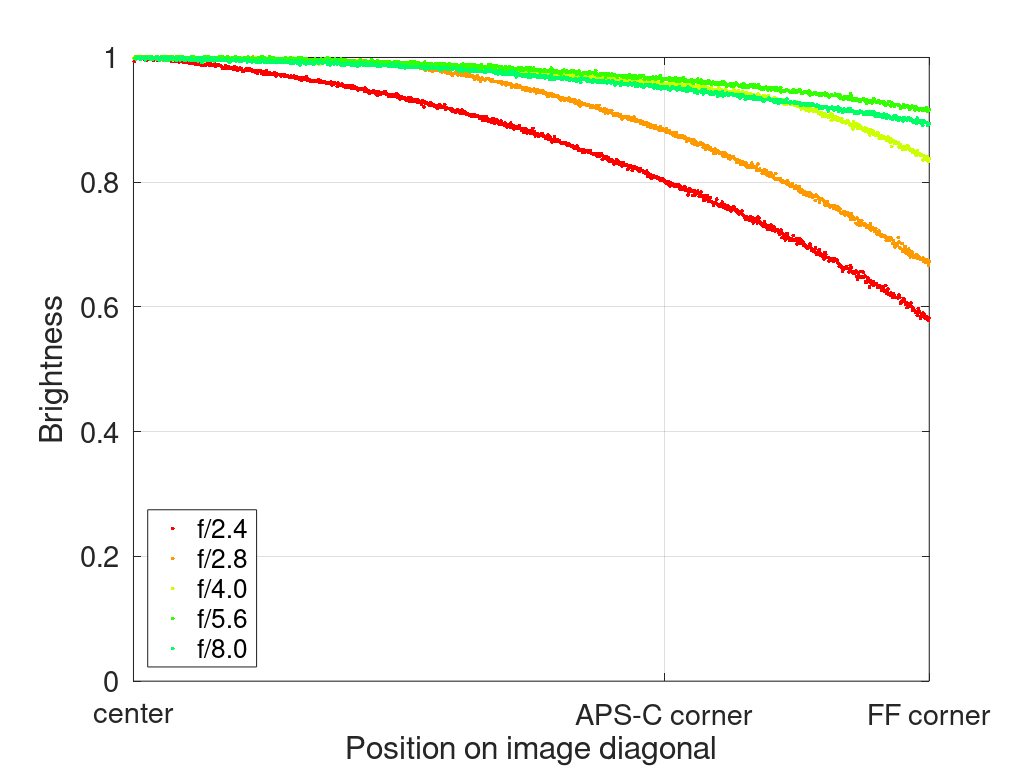
It is recommended to have a look at this article first to get an idea how this brightness graph works.
optical vignetting
We move from the center (left) to the extreme corner (right) and see how the shape of the light circle changes.

The Loxia 85mm 2.4 shows quite a lot optical vignetting, a price that has to be paid for the small diameter lens barrel.
These shots were taken at 0.9 m focus distance, you may get slightly different results at other distances.
Sharpness
infinity

You can also download the full resolution shots here.
By f/11 you start loosing details to diffraction, otherwise it doesn’t really matter which aperture you use between f/2.4 and f/8.0 for center and midframe, the differences are pretty much negligible in my book. The corners are best at f/5.6 and f/8.0, but already very good at f/4.0 and usable to good at f/2.4. The houses in the corner crops already look quite good wide open, but the fine detail in the trees is lost. Also be aware I have increased the exposure on the corner crops for f/2.4 and f/2.8 in post to match the others.
Compared to: Sony FE 85mm 1.4 GM
The Loxia 85mm 2.4 is a very high resolving lens at infinity. Already wide open it shows impressive performance across the whole frame.
At f/2.8 I see the GM slightly ahead, but the differences are so small, with different samples of these 2 lenses the outcome might be different. At f/4.0 and stopped down further it is barely possible for me to see a difference.
You can see the complete direct comparison in my Sony FE 85mm 1.4 GM review.
close focus
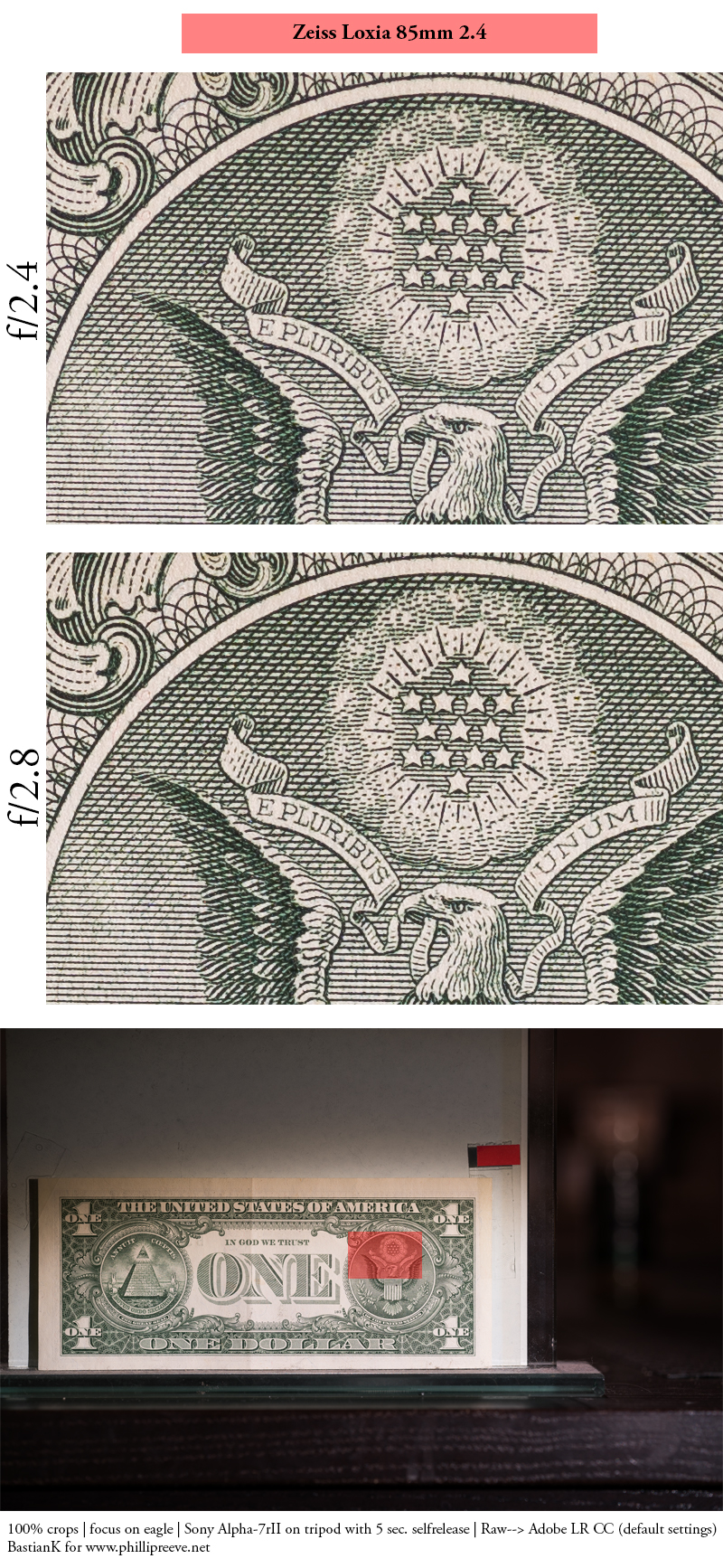
The performance near the minimum focus distance is excellent as well, even wide open with the 42mp A7rII and looking at 100% crops. In the center I can hardly see any improvements on stopping down further.
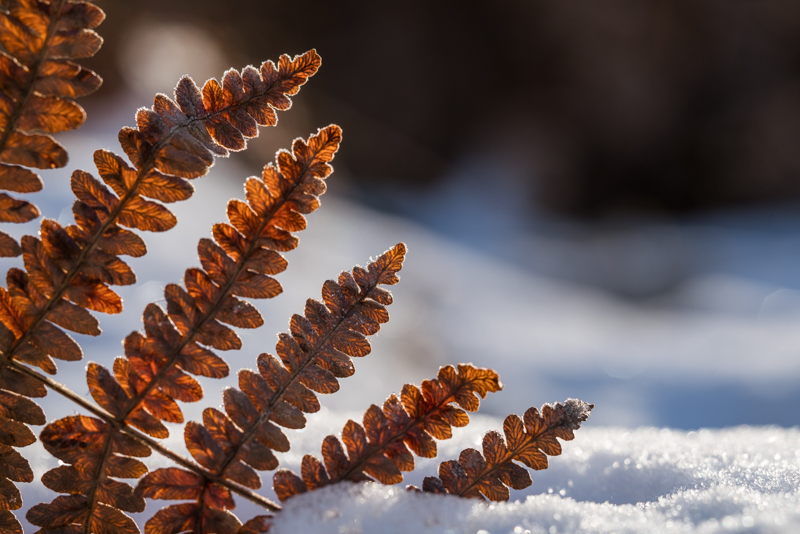
In the meantime I also used this lens with Kenko extension tubes up to 26mm and the performance holds up very well. You can find more sample images in this article.
Flare resistance
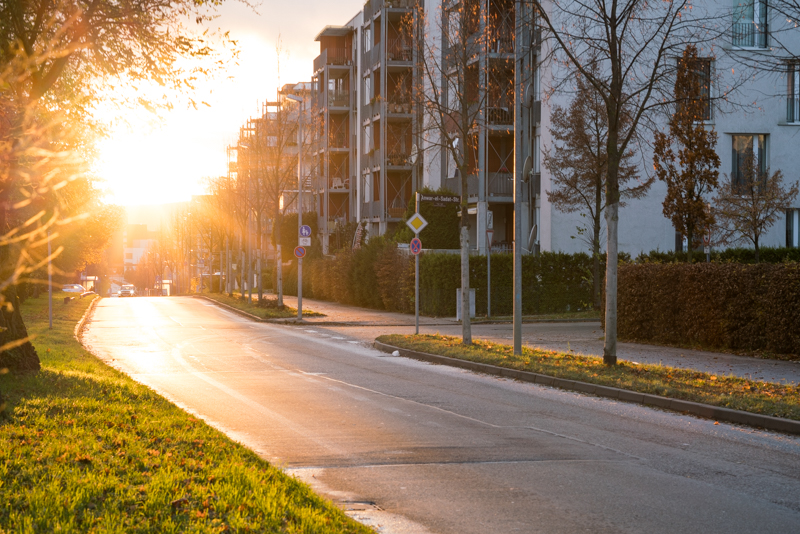
Most of the time flare resistance is very good, as in the shot above. Nevertheless, with a low winter sun this is the worst I have seen from this lens so far (I haven’t used the hood for this shot):
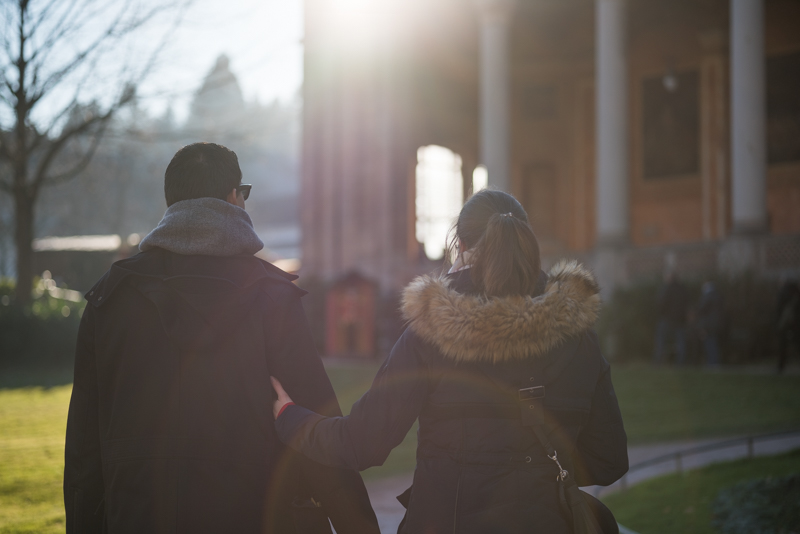
I have taken many shots straight into the sun without any problems, contrast also stays on a very high level.
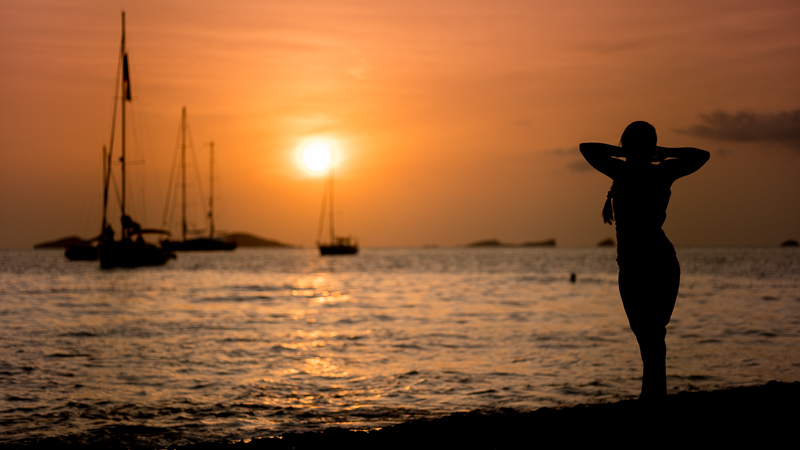
Bokeh
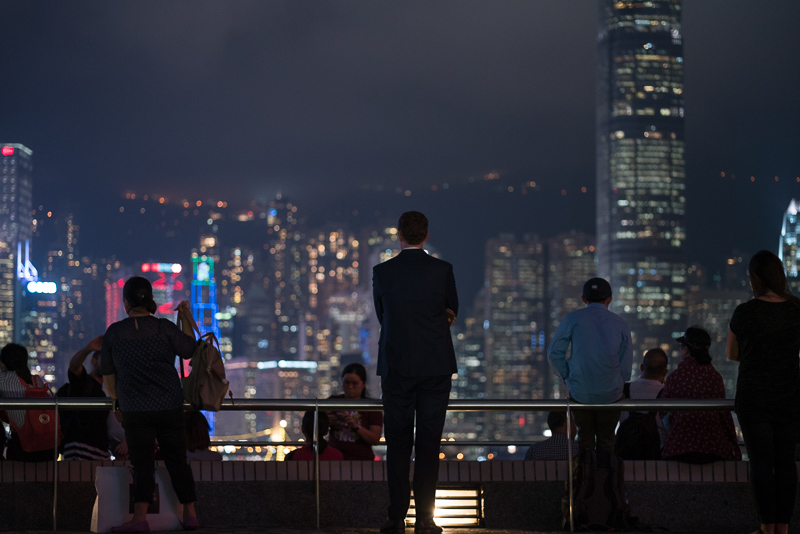
Sonnar lenses are known for their very smooth bokeh and this seems to be also true for the Loxia 85mm. But with a maximum aperture of 2.4 it just isn’t as easy throwing backgrounds out of focus as it is with faster lenses (see comparisons below), especially when not being super close to your subject.
Probably because of the small diameter of the lens the cat’s eye effect – describing light discs becoming ovals towards the borders and corners – is quite pronounced (see mechanical vignetting section).
Comparison Loxia 85mm 2.4@2.4 <-> Loxia 85mm 2.4@4.0:
Before: Loxia 85mm 2.4 @ 2.4 | After: Loxia 85mm 2.4 @ 4.0
Comparison Loxia 85mm 2.4@2.4 <-> Leica Summicron pre-Asph 90mm 2.0@2.0 (same distance to subject):
Before: Loxia 85mm 2.4 @ 2.4 | After: Leica Summicron pre-Asph 90mm 2.0 @ 2.0 (shot from same position)
Comparison Loxia 85mm 2.4@2.4 <-> Leica Summicron pre-Asph 90mm 2.0@2.0 (same size of subject):
Before: Loxia 85mm 2.4 @ 2.4 | After: Leica Summicron pre-Asph 90mm 2.0 @ 2.0 (shot from different positions for same subject size)
Comparison Loxia 85mm 2.4@2.4 <-> Jupiter-9 85mm 2.0@2.0 (same distance to subject):
Before: Loxia 85mm 2.4 @ 2.4 | After: Jupiter-9 85mm 2.0 @ 2.0 (shot from same position)
For head and shoulder portraits the subject isolation is absolutely sufficient and I really like that I don’t have to cope with artifacts like onion rings and disturbing loCA.
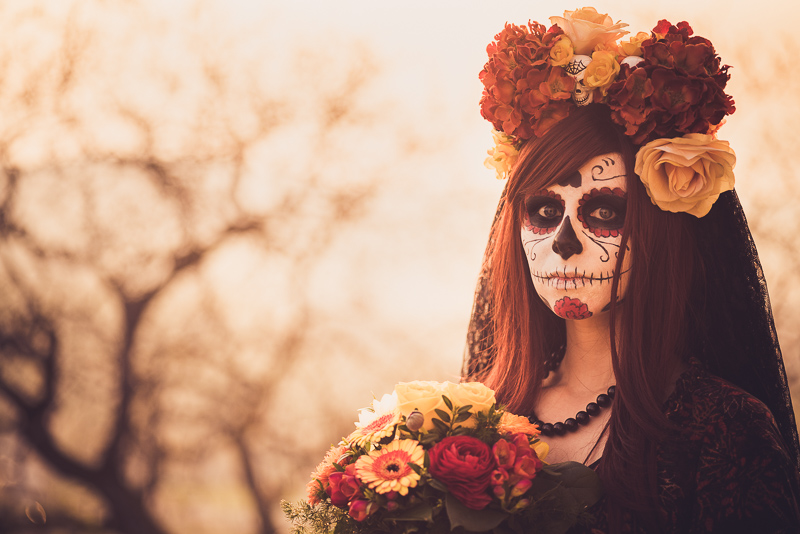
This is what bokeh looks like when you get a little closer to your subject:
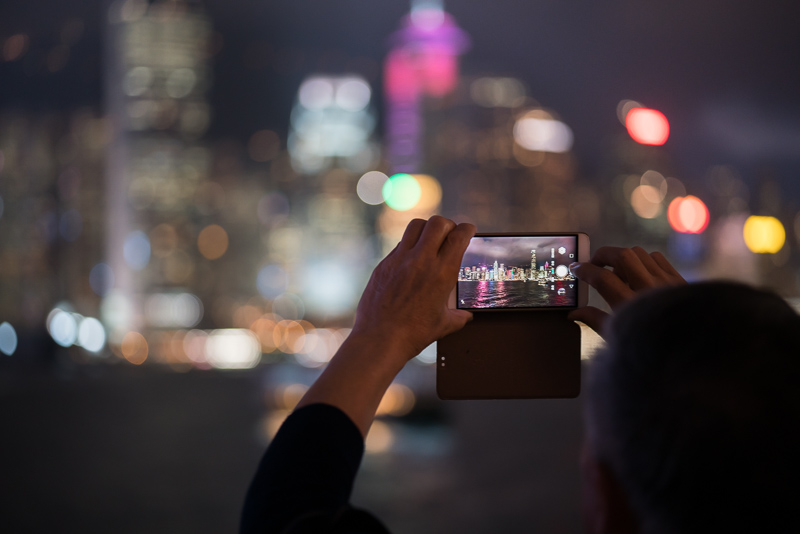
Coma
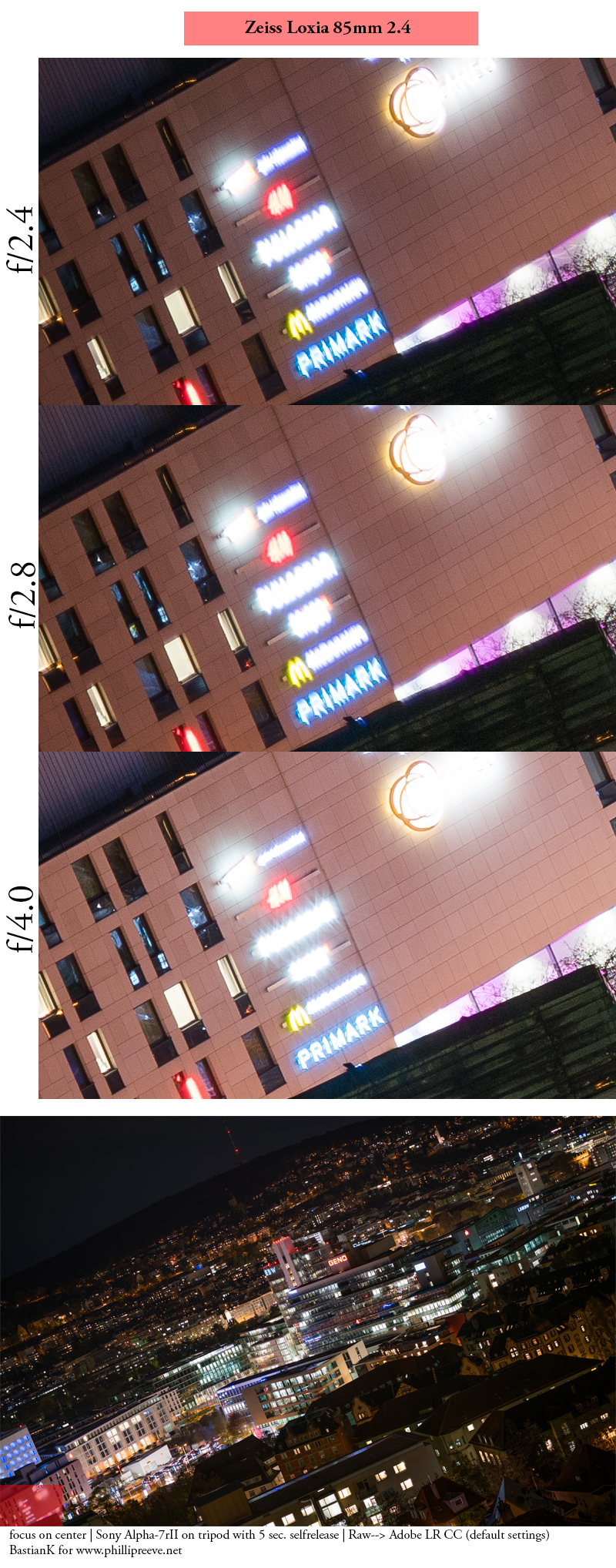 Wide open and stopped down to f/2.8 point light sources towards the borders are visibly deteoriated. Stop down to f/4.0 and the problem mostly goes away.
Wide open and stopped down to f/2.8 point light sources towards the borders are visibly deteoriated. Stop down to f/4.0 and the problem mostly goes away.
Sunstars
 From a Loxia lens you expect well defined 10-stroke sunstars and the 85mm definetly delivers here. From f/4.0 onwards the sunstars are as beautiful as on the other Loxia lenses. Of course this comes down to what rendering you prefer, so decide for yourself!
From a Loxia lens you expect well defined 10-stroke sunstars and the 85mm definetly delivers here. From f/4.0 onwards the sunstars are as beautiful as on the other Loxia lenses. Of course this comes down to what rendering you prefer, so decide for yourself!
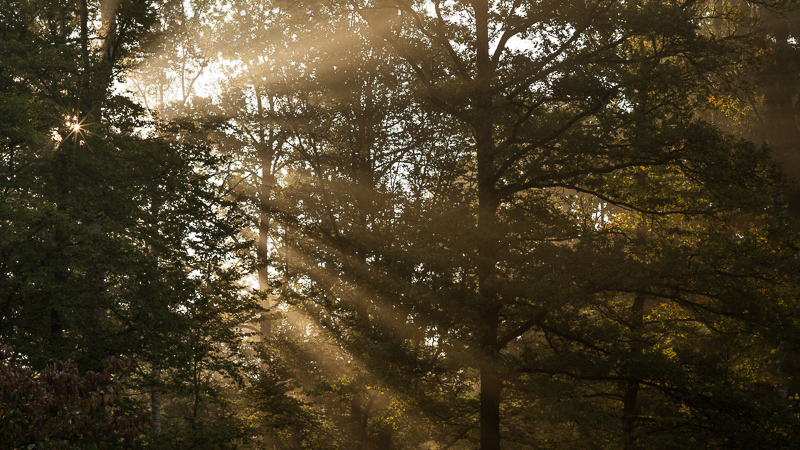
Distortion
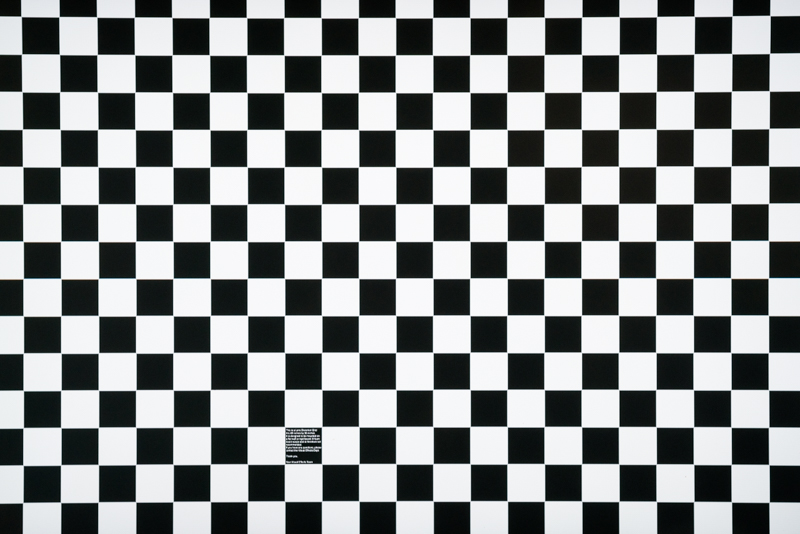
There is only a small amount of pincushion distortion. A Lightroom profile for correcting this is also available.
Chromatic aberrations
longitudinal
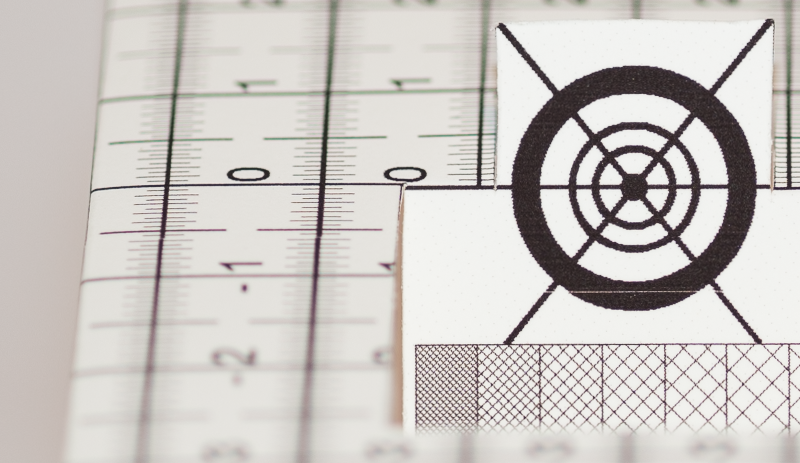
The correction of longitudinal CA (loCA) is pretty good, only slight traces of magenta and green outlinings are visible. Below is a real world stress test.
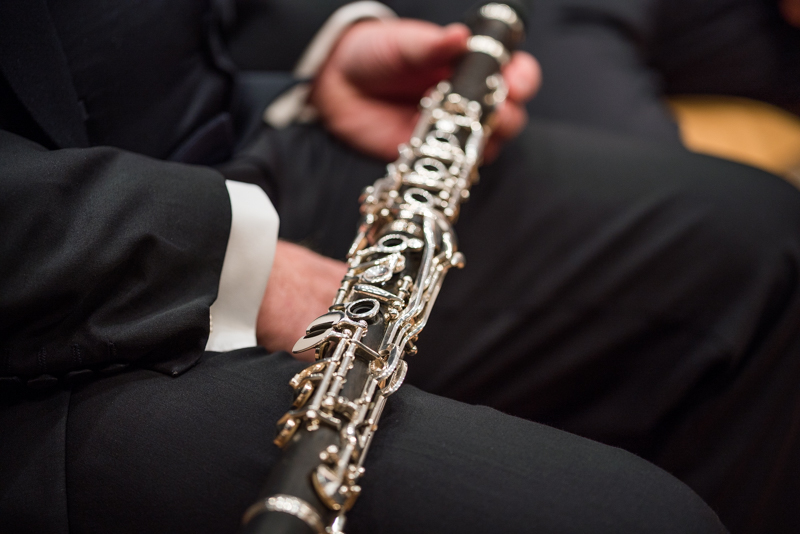
Focus shift
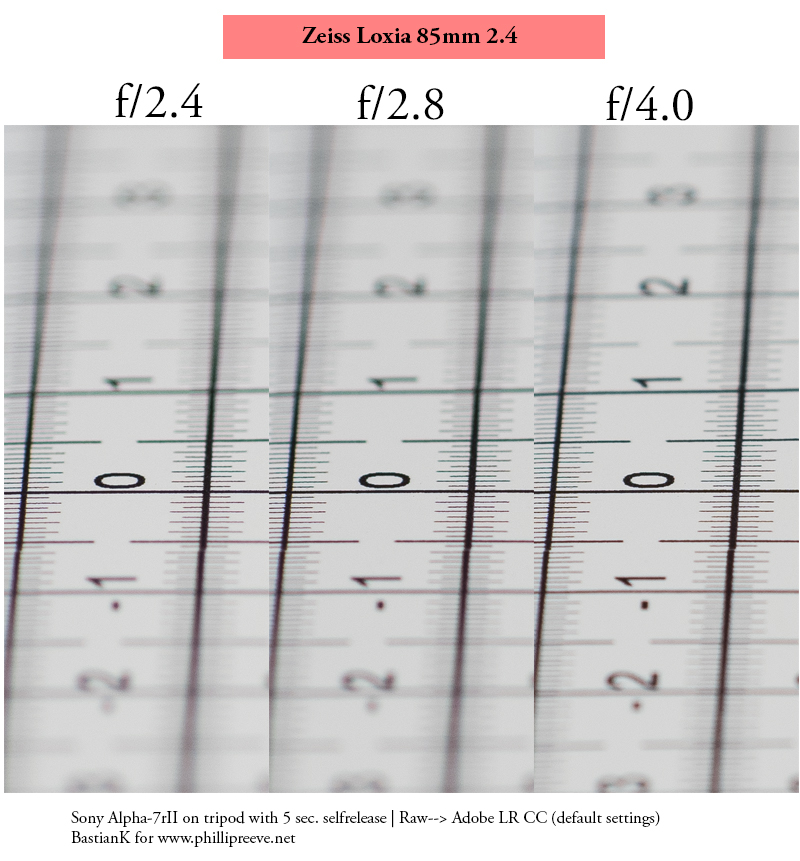 Sonnar designs are known for a few characteristics and one of the more unfavourable ones is the tendency to show some focus shift issues. Focus shift means that on stopping down the plane of optimal focus shifts, so to get best possible results at f/4.0 with an f/2.0 lens it might be necessary to stop down to f/4.0 first and then focus. On the Loxia 85 the focus plane might shift a little bit towards the camera on stopping down if you are splitting hairs, but it is in fact nothing to worry about with this lens.
Sonnar designs are known for a few characteristics and one of the more unfavourable ones is the tendency to show some focus shift issues. Focus shift means that on stopping down the plane of optimal focus shifts, so to get best possible results at f/4.0 with an f/2.0 lens it might be necessary to stop down to f/4.0 first and then focus. On the Loxia 85 the focus plane might shift a little bit towards the camera on stopping down if you are splitting hairs, but it is in fact nothing to worry about with this lens.
Alternatives
Sony FE 85mm 1.8
This is the low-cost 85mm with AF for the E-mount system. This is aimed at a very different user type. Have a look at Jannik’s review or his comparison to the GM 85mm 1.4.
Zeiss Batis 85mm 1.8
I haven’t used this one myself but I know you will be asking for it anyway 🙂 Despite the same focal length these lenses are very different and in case you need AF you have your answer already. Regarding the optics the Batis is no slouch either, but from the comparisons I have seen the Batis is not as high resolving as the Loxia.
Sony GM 85mm 1.4
Currently I own both as they serve different needs. It is 1 1/2 stops faster which is a lot, it is also about 203g heavier and for the price of a new Loxia you might even find a used GM. This really comes down to what you want to shoot, if you need f/1.4 you know it and you will be way more interested in this lens than the Loxia.
Zeiss ZM 85mm 4.0 Tele-Tessar
This M-mount lens is more than a stop slower but also noticeably lighter. While the Loxia discussed here may offer slightly higher resolution the lighter and cheaper ZM will still be good enough for most applications, especially stopped down a little.
Leica Summicron M 90mm 2.0 pre-Asph
I have been using this lens for quite some time and I really like it. It is small, it is fast, bokeh wide open is nice, sharpness and contrast are very good stopped down. But it also features a whacky aperture diaphragm (see review) which produces not-as-nice-as-Loxia sunstars, sharpness at closer distances is not really good wide open and the work against bright light certainly isn’t something to write home about. Corner to corner sharpness is not as good as the Loxia either. It is a tough call between these two. If you are merely looking for a portrait lens that might stir you towards the Leica, if you are looking for a very high resolving landscape and architecture lens you are probably better of with the Loxia.
Canon EF 135mm 2.0L
Even with a decent adapter this lens is cheaper than the Loxia and offers great across the frame sharpness as well. But it also allows for a much shallower depth of field at the same time. It is of course way bigger and a bit heavier, but if traveling light and small, flare resistance and rendering of sunstars are not your main concerns, this is seriously worth a look.
Tokina AT-X Pro 90mm 2.5 Macro
A macro lens reknown for it’s beautiful bokeh. Have a look at Phillip’s review.
Other 85mm lenses:
There are some more interesting 85mm lenses which we didn’t lay our hands on yet: the Leica APO Aspherical Summicron 90mm 2.0, all the Leica Elmarit (90mm 2.8) and Summarit (90mm 2.4/2.5) lenses and of course the many legacy lenses. From the mtf graphs I have seen I doubt any of them will beat the Loxia when it comes to resolving fine details, but if that really matters (to you) is a completely different question.
Conclusion
good
|
average
|
not good
|
There are 4 native E-mount 85mm lenses available now and I think this one will have a hard time appealing to potential buyers as it won’t win any numbers games: Maximum aperture? Too slow. Weight? Too high. AF? Nah. Price? Too high. Size? Too big.
I think the average customer will pick the Sony FE 85mm 1.8 while the bokeh lovers will pick the GM 85mm 1.4 anyway (with the release of the cheaper Sony alternative the Batis will also have a hard time).
So, who is this lens aimed at? I think people looking for maximum image quality who don’t need a faster aperture and therefore do not want to pay the size, weight and price penalties that come with the Otus lenses. This lens is quite similar to the Loxia 21mm 2.8 in terms of contrast and corner to corner sharpness, in case of the latter I tend to say even better. And sharpness is great across the whole distance scale, at infinity and at the minimum focus distance.
The quality of the bokeh wide open is also very natural as the lens features many special glass elements with anomalous partial dispersion but not a single aspherical lens element, so you won’t encounter any onion rings making it actually a nice “allround” lens.
There is hardly any real flaw, flare resistance is not perfect, coma performance wide open isn’t great, but for an 85mm lens the latter is not of real importance to me.
All in all a very well behaved lens that won’t appeal to too many people because of the moderate maximum aperture and of course the price.
Update: I have now used this lens for almost two years and I still really like it. It is a wonderful complement to the Loxia 21mm 2.8 and a lens that never got in the way of my shooting. It is great for architecture and landscape because of the very high contrast and resolution, for people photography beacuse of the smooth rendition of out of focus areas and even works as a macro with extension tubes. Highly recommended!
You can get this lens on amazon.com | amazon.de | B&H | ebay.com | ebay.de (affiliate links) for $1399/1399€ (new)
Sample Images
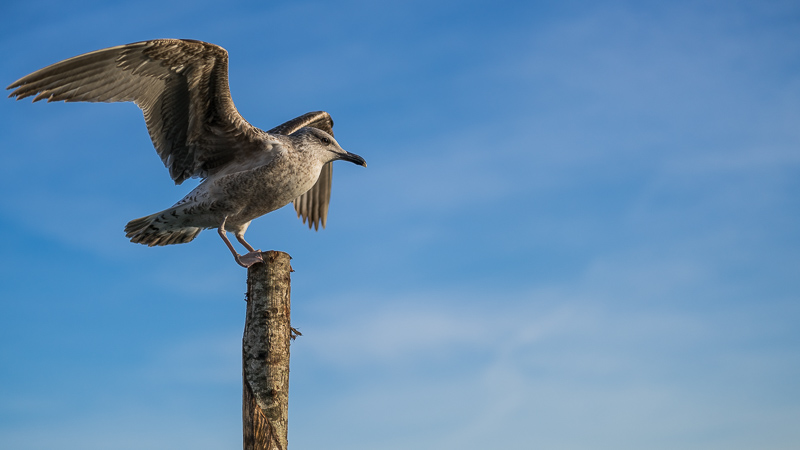
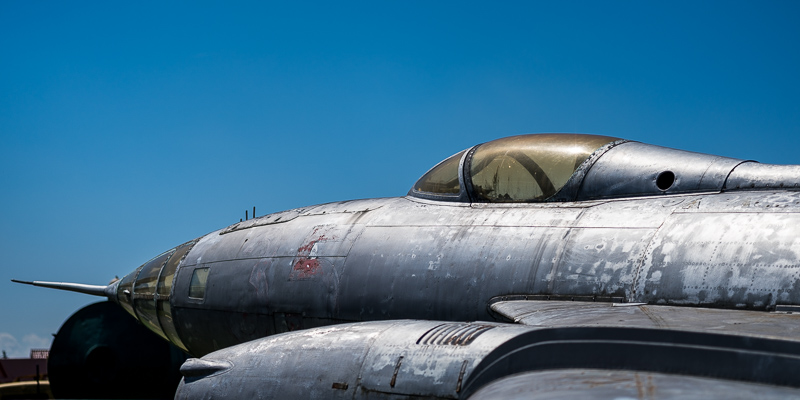
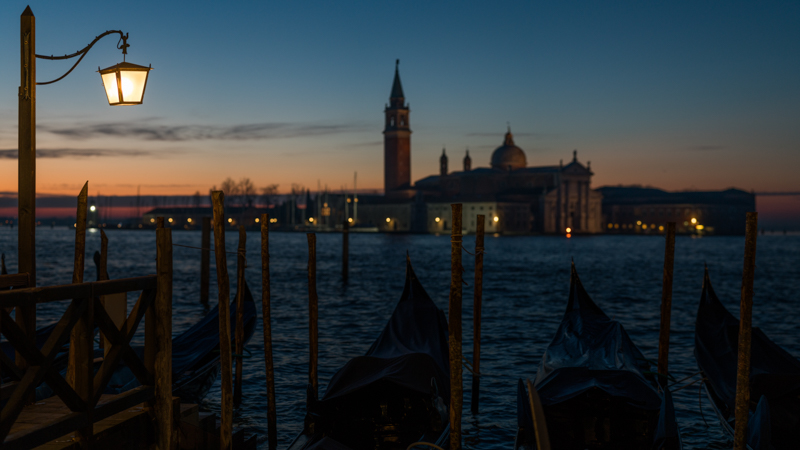
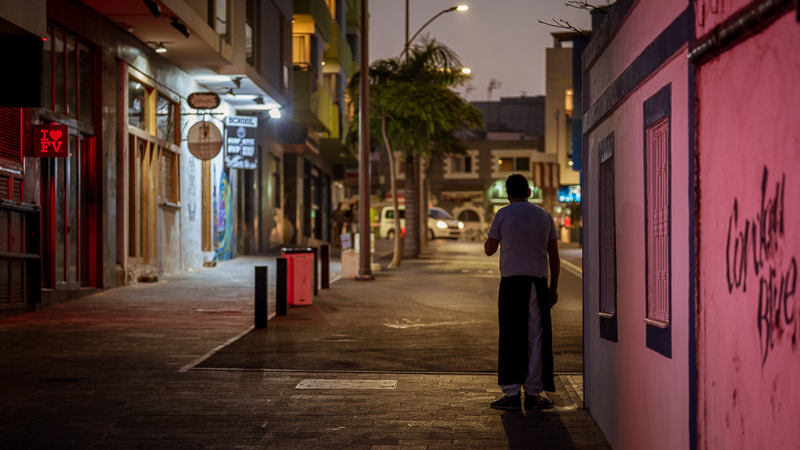
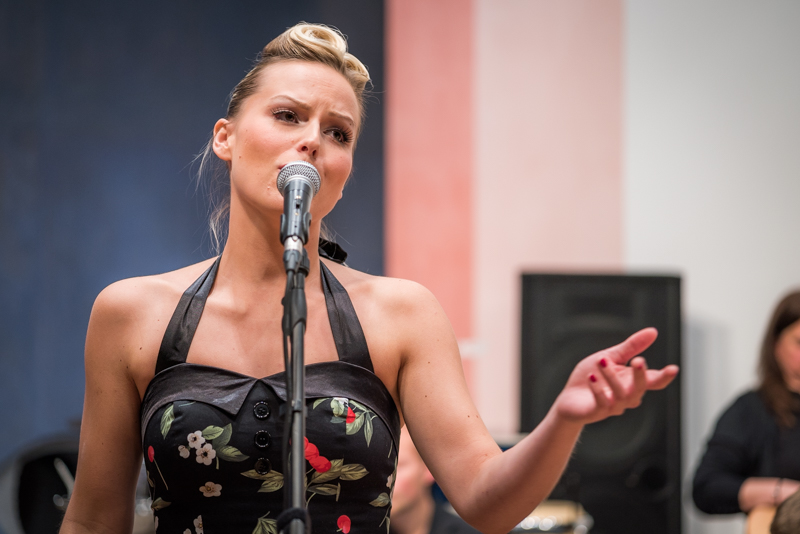
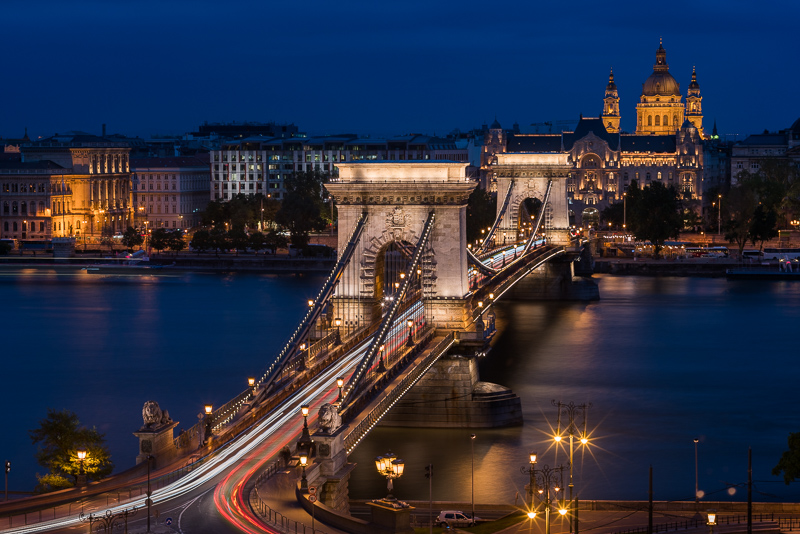
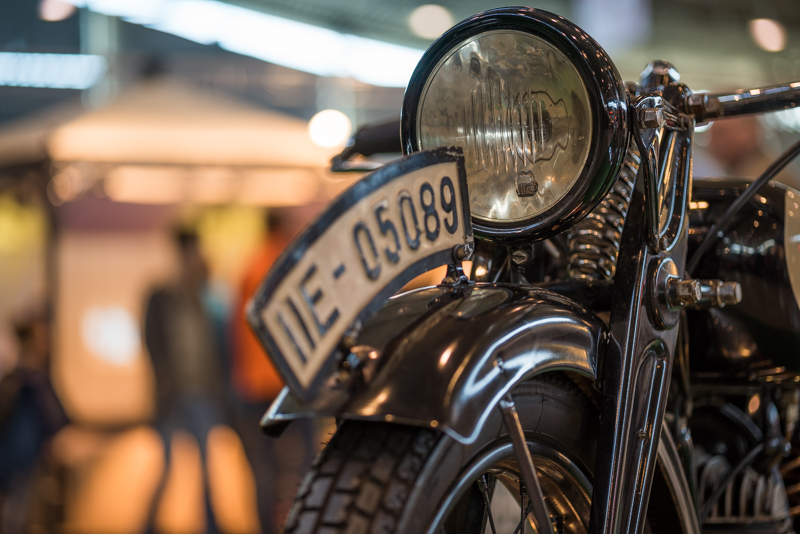
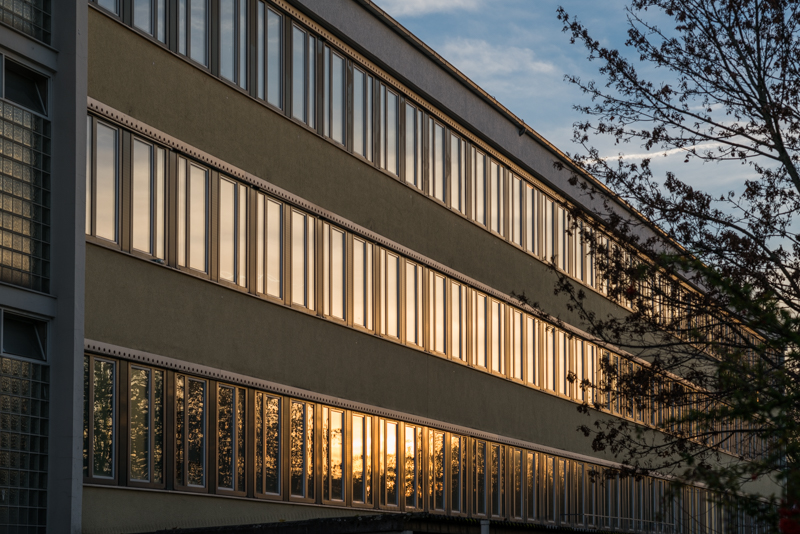
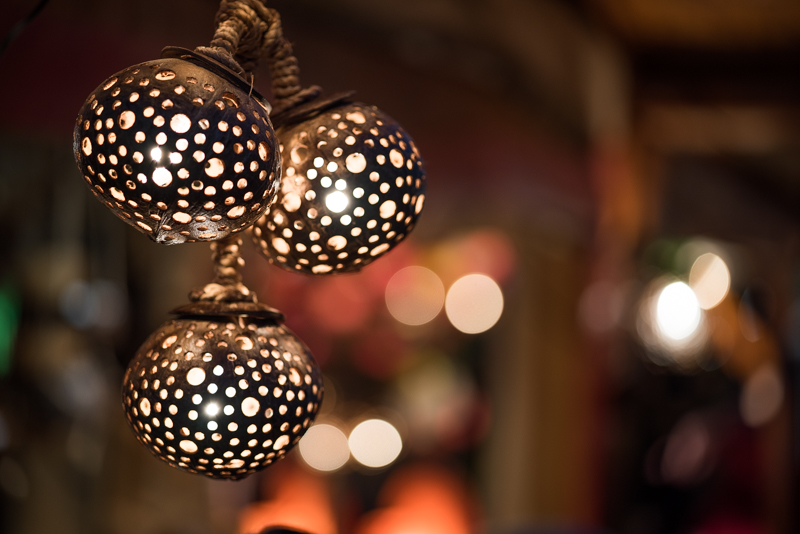
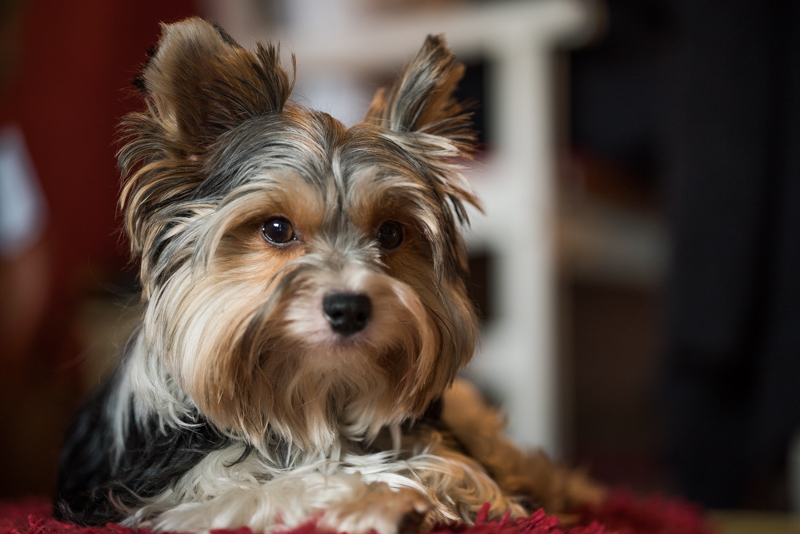
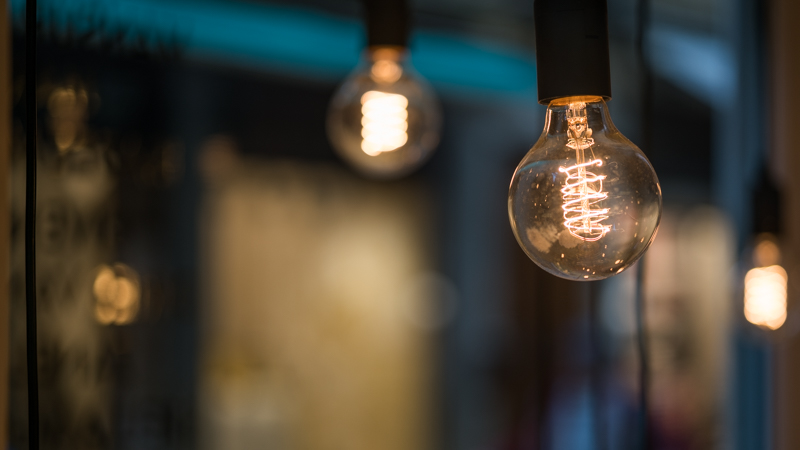
Further Reading
- Sony FE lenses: The honest Guide for the a7 series
- Leica Summicron 90mm 2.0 pre Asph Review
- Canon EF 135mm 2.0L
- Jupiter-9 85mm 2.0
Support Us
Did you find this article useful or just liked reading it? Treat us to a coffee!
![]()
![]()
![]() via Paypal
via Paypal
This site contains affiliate links. If you make a purchase using any of the links marked as affiliate links, I may receive a small commission at no additional cost to you. This helps support the creation of future content.
Latest posts by BastianK (see all)
- Review: Mr. Ding Optics 35mm 1.8 Pactcron - September 28, 2025
- Analogue Adventures – Part 44: Kodak Elite Chrome 200 (expired) - September 24, 2025
- Review: Viltrox AF 14mm 4.0 FE - September 19, 2025



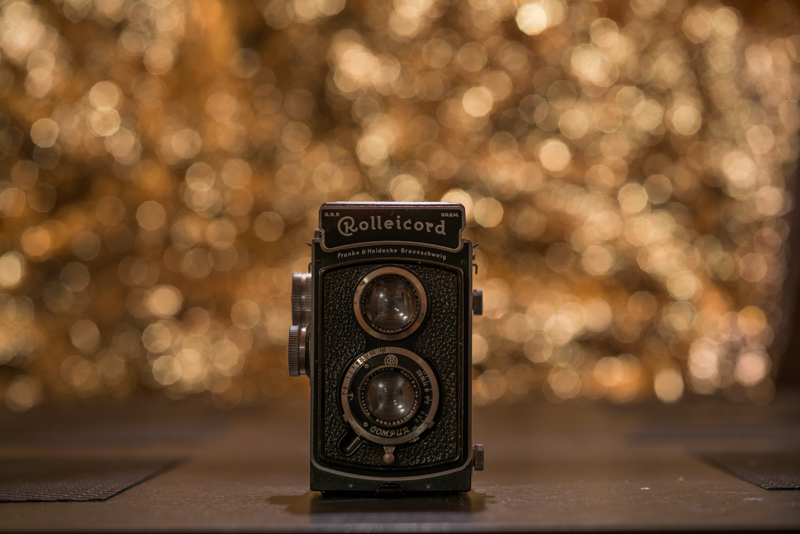





Gosh I’m surprised by how much larger the bokeh balls are from the Summicron Pre-Asph; it’s just a little bit slower and a little bit longer, but I guess the two together add up…
I was also a bit suprised. Sure I was expecting differences, but not as much…
I meant faster, of course…
I wonder how this compares to the contax g 90mm f2.8, which is much cheaper. Looking forward to your updates!
Also the voigtlander 75mm f1.8 seem to offer good size/ weight for pairing with a7 series.
I second the need for a comparison with the 90mm Sonnar G, and would add the 85mm 2.8 Sonnar CY (slightly less sharp than the 90 but with better color rendering IMO).
I have and love the 21 Loxia, so that is probably my answer right there.
I’ll third this – only because several Sony users I’ve talked to / discussed online, when this Loxia was announced being a rather slow lens, said “This will have to be significantly better than the Contax G 90 to earn its keep.”
The C/Y 85/2.8 is ultra-sharp in the center of the field. On the edges, very good but not exceptional. The Leica R 90/2.8 is also a wonderful lens, a tad sharper on the edges, a tad less sharp in the center, and as good at close distance than at infinity. Stays excellent when used with an Elpro achromat close-up.
Thanks. Very interesting comparisons.
[I think the Jupiter and Loxia images have been swapped with respect to the description]
You are absolutely right, corrected!
Just bought a Voigtlander Color Heliar 75 2.5 and i am really surprised by the quality of the lens on the A7r. It’s a small and light lens too ! Yes,there is some fringing but it is easily removable. And of course it’s €250/300 vs €1400 of the Loxia…
Sure it won’t be as perfect as the Loxia but i suggest you do a review of the lens in the future because it is quite surprising.
It is quite high on my priority list already 🙂
I’m a big fan of colour heliar too.
It does have a lot of LoCA wide open which is not super easy to remove, but stopped down its killer sharp across the field at mid distances.
At wider apertures it’s not super contrasty either.
On multi day hiking trips I tend to bring as a core pair either a 35 and the Heliar, or a 50 and the ZM 4/85.
Actually the ZM 4/85 is something you might want to review: perhaps not as great as the Loxia 85, but half the weight, and I doubt if the quality difference would be visible in a print.
Hi David,how do the Voigtlander 75 2.5 and Zeiss 85 4 compare ? Is the zeiss any better ?
Thank’s
Nicola
Wow how did you guess I had those two?
I haven’t done controlled tests – but my impression is that the Zeiss has a lot more contrast at all apertures, though stopped down resolution is likely similar. The zeiss deals with backlight much better. I think the Zeiss is better wide open than the V is stopped down to f4, but they are getting close at f5.6. The V has worse colour correction – Lots of LoCa at wide settings, and bit more corner CA stopped down.
Thank you for the answer David ! I was attracted by the Zeiss 85 f4 but finally bought the Voigt 75 f2,5. Cheaper,lighter and faster aperture. I find it a good/very good lens. I mainly shoot landscape so sharpness at infinite is important. Would like to try the Zeiss but they are rare on eBay and cost around €500. I bought the Voigt for € 250
Regards
Nicola
Regarding the *Color*-Heliar, its not the sharpest lens, but gosh, I love the colours from it! Especially on digital. This actually the first time for me when I like the lens mostly because of the colour rendering… I also have TE 90 (thin one), and its a decent lens (sharper too), and in principle would often be a more useful FL, but I tend to use the heliar most!
V.
Stopped down a bit, the Colour-Heliar is probably diffraction limited: it’s about as sharp as a lens can be stopped down. Astonishing for the price. And size.
Agree it’s not quite so sharp wide open. It also has more Longitudinal chromatic aberration wide open than I prefer.
The “colour” in the name of course is about suppression of LoCA; it’s a Voigtländer convention for lenses where attention has been paid to achromatic (but not apochromatic) behaviour.
Af for colour in your sense: the overall look of colour in the image, that’s of course a matter of taste. This lens has a little less saturation and contrast than some more modern ones, due probably to how non imaging forming light is dealt with (older coatings and designed before ray simulation of non imaging forming light was practical). Some will find that a bit flat, some will think it’s wonderfully natural, others will think it’s arty and or nostalgic. One thing to say about that is that it’s easier to losslessly *reduce* saturation and contrast in post, than it is to losslessly increase it.
Wow very nice review. Can you make a “Zeiss in House Battle” of the 85 Loxia and the 85 Batis… Same Pricerange Same focal length.
Thanks.
ps: ich dat review net op deutch jefunden … ob schreibst du jetzt nur noch auf englisch?
We will try to get a Batis 85mm for that comparison 🙂
Most of my reviews are only available in english, as most people understand it and it takes quite a bit of time to translate them, which I rarely have.
• SMC Pentax FA 77mm f1.8 Limited (full frame; famous for bokeh; weight: 270 grams)… and • HD DA Pentax 70mm f2.4 Limited (full frame from around f4.0; aperture blades: 9 rounded; weight: 130 gram ‘pancake’). 64 & 63mm in diameter, aluminum construction, and very amenable to smooth manual focus operation. 7 and 6 elements respectively: the resultant color, micro contrast rendering, and 3D effect at all apertures demonstrate the benefit.
I miss the Samyang 85 f1.4 in your list of alternatives. Very nice Lens (same weight) but 1.4 and the best Bokeh you might get (same level as the GM).
LG, Reinhard
I have included almost no f/1.4 lens in the alternative section (except for the GM).
If you are looking for an f/1.4 lens you will not be interested in the Loxia and I think vice versa it is the same thing.
I can understand your aproach but the Canon 135 is even more displaced when comparing light 85’s.
But for me it is of course a question of alternatives. I prefer a light setup (using the Voigtländer 15 III, the Sony FE28, FE 55) and hoped for a light 85 f2 with a weight around 300g. But with a weight of 600g it is no alternative to my Samyang 85 wich I add to my kit for weddings. A good modern manuell 85 lens with a decent weight is still missing (I hoped the loxia would fill this gap).
By the way, thank you for doing this and for the intelligent approach. Well done! Looking forward to the expansion.
In which place would you put the Tokina AT-X 90mm 2.5 Macro in the row of the alternatives? Is this lens comparable despite its age?
Hi Jean,
I’ve shot both lenses a lot. I think the Tokina is amazing for close work (portraits and relatively close focused subjects to get the most of the amazing sharpness and bokeh), and of course macro. It compares very favorable to modern lenses in those areas.
However, shooting landscapes the contrast is not so good at infinity, and that type of photography looks bland (flat and no saturation) IMO from that lens. Also, forget about putting the sun in your shot because the contrast dives even further, plus it flares and produces lots of ghosts.
I would choose the Loxia if you shoot landscapes, weather, cityscapes, night shots, and don’t like to do a lot in post. I would choose the Bokina for close work and budget.
hi,
nice review! i have a question: how does the loxia compere with the zuiko 100 2.0, especially on the ar2?
i do a lot of architecture, but i would like 2.0 for people (and cats!), so i’m in doubt, wich one would be the better choice.
i wish you a happy new year
joachim!
Hey,
None of us shot them side by side, sorry!
There is something special about the Loxia lenses’ rendering. Pictures look classy with subtle and special beauty that sets them apart from other lenses. That being said, I’m happy with my Batis 85mm and 25mm, and I don’t think I will ever acquire that 85 Loxia. I am considering replacing the 25mm with the Loxia 21, but even this is not an easy decision to make. It is annoying that the weakest loxia, the 35mm, is the one that makes most since in the entire lineup. I wish it was anything near the 21 or the 85 optically.
The three native 35mm for Sony suck, each in its own way. The ZA 1.4 is gigantic and not very impressive wide open. The ZA 35 f2.8 is slow and produces flat images that look like the ones taken by a cellphone camera. Loxia 35 is perfect in size but not really sharp wide open with a lot of SA….. Zeiss, please give us a Batis 35 f1.8.
I don’t think the Loxia 35 is as bad as most people say it is,
but of course I would also prefer if it was more like the 21mm and the 85mm.
Oh, and there is a reason I am using the 35mm 1.4 ZM now, as I
absolutely share your view on the other native 35mm lenses…
Hi. Want to thank for a good website. Would be interesting to see how loxia 85mm handle macro mode with extension tubes.
Funny coincidence you mention that!
I was just looking into extension tubes to use them with this lens,
when I have decided which to buy and tested them I will update the review 🙂
I recommend the Kenko tubes for A7 series cameras.
I’ve had two sets of other, cheaper ones.
The first (commlite) destroyed the contacts in my old A7r! Something wrong with the pins.
The second generic set were not as bad, but I fear the pin retraction mechanism will fail: and it’s shiny plastic inside.
The Kenkos cost more, but they are flocked against reflection, and have a decent build quality….
Just yesterday I checked what amazon has to offer and the Kenko are the only ones I would be willing to order.
For F-mount it was the same: Kenko are expensive but decent, everything else isn’t worth the package it will be delivered in.
Yes; unfortunately the Kenko full frame tubes (make sure you get them – they also make E mount tubes for APSC and they vignette on full frame because of the shape of the masks) only came out recently, so in the early days of my A7 use (I had a mix of Canon FF with M43 for hiking before) I had to try the lesser tubes. Never again. Just goes to show how quality matters even with something as simple as a set of tubes…
There was a semi decent offer on amazon warehouse deals so I will try them out.
Right now there is no room in my kit for a dedicated macro lens, but with the very good quality of the Loxia even at MFD this might work quite well (with the 10+16mm tubes 1:3 to 1:2 should be possible).
David,
today my Kenko extension tubes arrived.
The fit extension tube -> body is fine, but lens -> extension tube and extension tube -> extension tube shows a little more radial play I am willing to accept for the high price tag.
Do yours show the same behaviour? As mine are from warehousedeals they might be faulty, want to rule that out.
I use DÖRR extension tubes, works fine on my Sony FE. http://www.dorrfoto.co.uk/Lenses-and-Accessories/Extension-Tubes.htm
Hi Bastian
I get just discernible radial play tube to tube (but considerably less than 1mm);
None lens to tube. Slight sample variation? I doubt that warehouse deals are likely to more than the usual random amount of faultiness!
My experience with the commlites stripping the camera contacts has made me think, though that marginally too loose is better than too tight.
But I agree that for this money we shouldn’t have to choose!
Dommage, comme sur le 21mm que je possède et qui est tout bonnement excellent, la bague de diaphs n’est pas assez différentiée de celle de focus (pas assez cannelée ou trop proche).
C’est assez pénible de modifier accidentellement la mise au point alors qu’on voulait fermer le diaph.
Je suggère à Zeiss de concevoir un “anneau” adaptable sur la bague de diaphs (genre collier-écrou pour pied de gros télés ou zooms) avec une mousse intérieure pour ne pas abîmer les cannelures.
J’ai essayé de monter un anneau caoutchouc réglable vendu sur la baie mais ça n’est pas idéal, la vis de serrage est trop proéminente et ça gêne plus qu’autre chose.
For landscape work, if you don’t need faster, the Zeiss ZM 85 4 is incredible. Fits in your pocket and I’ve not come across anything as sharp–tons of detail.
Buen día! gracias por la revisión!
Yo te leo desde una ciudad pequeña que está en una de las orillas de México, desde Los Cabos BCS, por aquí no hay tiendas de fotografía, no hay negocios que renten lentes para probarlos antes de ir a comprar uno, no es fácil encontrar a alguien que guste de la fotografía a profundidad, de tal forma que si no fuera por estas revisiones, uno compraría casi prácticamente solo con la información del fabricante, así que nuevamente, gracias por la revisión.
Yo creo no que Zeiss haga un lente por error, imagino que cuando deciden empezar a producir un nuevo producto, ya ha pasado varias pruebas de laboratorio, asesores, óptica, control de calidad, entre otras cosas, no es que ese producto tenga que gustar a todos los usuarios, hay productos que van dirigidos a un mercado en particular, y creo que ese es el caso la línea Loxia y este 85mm no es la excepción.
Entiendo a los fotógrafos de deportes, a los fotógrafos de eventos sociales, a los amantes de la última tecnología (que no toman fotos) que ven a este lente, como una caja de zapatos vacía y cara, pues carece de autofoco, carece de una apertura f 0.7 de Kubrick, carece de estabilizador y además es caro (en México, por los impuestos acaba costando cerca de $2,100 dolares americanos!). Sin embargo hay fotógrafos que vemos este lente como una joya, fotógrafos a quienes nos gusta colocar el punto de enfoque en un preciso sitio específico(no el que el autofoco crea que es el ideal), que sabemos que un retrato no requiere una apertura más amplia que 2.4 si quieres que ambos ojos de tu modelo salgan enfocados, que con aperturas menores solo saldrán ambos ojos si la linea entre los ojos del modelo es perfectamente paralela a la superficie del sensor de tu cámara y claro que ni la nariz ni las orejas saldrán en la zona de enfoque ¡y menos en 85mm! y además fotografías completa y constantemente de frente solo parecen retratos para credencial.
Los lentes 1.2, 1.4, 1.8 son grandes diseños de óptica y tengo algunos, pero no ofrecen su mejor rendimiento sino arriba de f4 por lo general. Hay a quienes nos gusta disfrutar el proceso de la creación fotográfica con nuestras manos , fotógrafos que aun disfrutamos la virtud de la contemplación sin prisa de las imágenes que creamos, creadores que hacen arte (seriamente hablando) con una cámara, imágenes puras (no planas) que no tienen impregnado el artificial perfil de un lente, fotógrafos que 85mm no solo nos suena a retrato, también nos suena a paisaje, a un encuadre medio cerrado. Bueno pues para ese tipo de fotógrafos, este Loxia es una joya, este lente no es un lente totalmente manual por casualidad, este es un lente creado seriamente para ser totalmente manual (¿hay autos verdaderamente deportivos con transmisión automática? no lo sé, pero creo que no) la opción de liberar el anillo de enfoque para vídeo (mi esposa hace video yo hago foto) nos cae muy bien.
El bokeh, tiene un maravilloso bokeh (no excelentísimo como el GM 1.4, pero ¿esa diferencia será lo más importante en la composición fotográfica para mì? la respuesta es No) además Loxia es más consistente en esa transición bolas-estrellas.
Yo creo que aquí Zeiss volteó a ver a los artistas, a los fotógrafos amantes del modo manual, a los artesanos de la cámara y dijo: tengo una obra maestra de borde a borde en óptica pura para hacer arte con sus manos, ahí les va.
Thank you for your thorough comment!
I am glad there are people that share my view on this lens 🙂
Bastian
between the loxia 85 and 65 voightlander which one would take better portraits. would it be the 65 since is 2 fstop or the 2.4 for being a longer focal length ?
A comparison with Contax Zeiss 85mm f2.8 (Contax Yashica mount) would bee interesting. A friend time me that the Contax 85 was better than Loxia 85, when he used flocking adhesive paper Into hos adapter. I really wonder if he is right, I mean the Loxia should bee a better lens.
absolutely! i also think the comparision to the contax/yashica 85mm sonnar 2.8 is obvious: it’s super small, rather cheap and known to be a great lens – only standing in the shadow of it’s bigger brother, the 85 1.4.
Hi, do you still keep the Cron 90mm or you completelly switch to the Loxia 85mm? Thanks in advance and regards! Jorge
Hi!
Fascinating lens! Which it looks to be, from the characteristics alone, between Cron-M and Elmarit-M. This also in prize! A larger bang for the buck in the Loxia?
Thanks in advance 🙂
Regards, J.
Thank you for the great review!
You stated the Batis 85 would have aspherical elements, which is not correct.
Both Sonnars share a very similar design, but of course the Batis has additional elements for AF and OSS.
The purist will be satisfied with the reduced Loxia design for sure.
You are of course right, I wonder why no one noticed so far (including myself).
Hi, two minutes for my thoughts:
I tried some „old“ 85- lenses on the A7RII. First I thought that the results were looking very nice. Than I took the same objects with modern lenses, and those looked much better under any aspect.
I tried Batis, Loxia, GM as new lenses and Leica 90 Elmarit, Summarit 75 and Nikon AI 85/2.0 as older ones.
I now stay with the GM (1.4!) as it is a really wonderful portrait lens, and the Loxia for all other purposes. I never missed the IS of the Batis because the camera IS is enough.
The IQ of the Batis is one step lower than that of the two others although it’s a nice lens „for everything“. May be I would take the Batis if I had to choose only one single 85er, but won’t be happy then knowing that this lens is not as good as my A7RII could deliver.
My view to the further 85-battle: Samyang and Voigtländer are nice for shure, but IMO not playing in the same league. The Zeiss ZM ist wonderful, bit too slow. The ZM 2.0 is stellar in all aspects (I could try it on Photokina), but too expensive.
Just curious: Which Voigtländer are you referring to? As far as I know, Cosina Voigtländer only made one 85mm lens: S APO-Lanthar 85mm F3.5. This is an older lens which, while fairly sharp, is not as good as the rest of the Apo-Lanthars, so it makes sense that it is not as good as the stellar new lenses that you mention.
The Voigtländer 75mm f/1.8 Heliar Classic, which I own, is quite bad with lots of CA and spherical aberration. But this is to be expected from its basic optical construction (essentially a Cooke triplet).
As for Samyang, of course the original 85mm f/1.4 is not as good as the Zeiss etc that you mention. But the new Samyang XP 85mm F1.2 which just came out last year is supposedly very good. It has better CA control than the Sigma Art 85mm, and is super sharp. I wouldn’t be surprised if it equals the Sony GM in image quality. It is quite big and heavy (1 kg), however, and comes in Canon EF mount.
Hello!
Recently I’ve got a brand new loxia 85mm and found a strange fact that I needed to rotate more to infinity to get the right corner sharp, and rotate back(closer) to get the left corner sharp.
First I thought it was field curvature and I thought the lens just sucks with this sort of strange curvature. But then I tested with my other minolta lenses, and found the same result.
Do you think if it could be a tilted sensor that cause this problem? I don’t think 3 different lenses would exhibit the similar weird curvature like this.
The cam is Sony A7,
Best regards,
Ian
It is possible that the sensor is tilted, yes.
It’s confirmed!! After I have just tested today with my new(used) A7m2, and the performance was stellar..just as you reviewed above, Corner to corner crisp sharp at wide open, with not even the slightest field curvature or what. It’s just so excellent!! And the annoying jitters and vibration when I use a gimbal for video shooting is gone… So it should be the sensor to blame.(whether it’s tilted or other problems I still don’t know)
I can’t help wondering now, while so many users discuss or complain that some renowned lenses can’t live up to their expectation, did any of them check their cam body? And the strange thing is, nobody seems to be ever talking about it…They just assume the cam body is always in perfect status. I googled everywhere and found no topic on this sort of matter.
Nevertheless I feel so lucky to keep a clear mind and keep the gem.(nearly wanted to sell it ; )
Thanks for your advice!
How about the contax 85 2.8?
How does it compare?
It’s so small and light almost like a 28 or 50 lens.
I have no personal experience with that lens, when you take into account the adapter it is not noticeably smaller anymore.
Great article! Thank you! Although now I have no other choice anymore than to go to shop and buy that lens.. Aaaaargh! 🙂
The girl with skull makeup and flowers on hand is one extremely captivating photo! Wow! I mean: WOW! That photo ranks on my top ten best list of photos I’ve ever seen!
Thank you very much for such kind feedback, I will inform her too, as make up and flowers are obviously not by me 🙂
Hi Bastian.
I’m having a hard time deciding between this lens and the CV 110mm for my landscape MF kit. I use and love the loxia 25mm, also own several AF lenses and plan to expand my MF kit with a short tele and, maybe, an ultrawide angle lens like the CV 12mm. If Loxia’s 85mm is anywhere clore to the color rendition, contrast and sharpness of the Lox 25mm, then I should be in. On the other hand, I’ve never used a Voigtlander lens, so don’t know if there are big differences in performance in the three fields I just described.
Thanks for your help and keep on feeding this amazing site.
All the Loxia lenses I have used so far (which means all the Loxia lenses) are very close in terms of color rendition, contrast and sharpness.
The 2/35 and 2/50 being rather old designs means they need to be stopped down to f/8 to show really good performance.
This is not the case with the 2.8/21, 2.4/25 and 2.4/85, these are really really good from wide open.
Personally I think the 2.4/25 and 2.4/85 make a very likable 2 lens setup that goes a long way.
But: if you think you will often make use of the macro feature of the 110mm it might make more sense to get that one.
Personally I often carry an extension tube when I go out with the Loxia 85mm.
I like the bokeh rendering of the 85mm Loxia more than that of both the native Voigtlander APO-Lanthars.
But you did not mention bokeh, so maybe that is of little interest to you.
With the Voigtlander you get perfect loCA correction where the Loxia 85 is only very good (Loxia 25 I would rate okay to good only by comparison).
Another small information: the CV 12mm seems to have been discontinued (I guess more people went for 15mm 4.5 or 10mm 5.6),
so if you want one may get it sooner rather than later.
Bokeh is also important, but for that purpose I use and enjoy the 85mm GM. My goal with this new addition is to build a nice two lenses combo for landscape/travel (three lenses maximum, being the last one on the wide side of the spectrum).
Macro is a completely new field to me, so it will hardly be the great factor in my decision.
The only alternative I could consider in this regard would be Lox 25mm + CV 50mm 1.2 + CV 110mm. But I don’t see how any CV lens could beat the loxias in terms of color and contrast.
I knew about the CV 12mm being discontinued, but thanks for the reminder!
Hello Bastian,
I just brought a loxia 85, and it seems like the focus ring has about 1mm of play on the horizontal axis. The vertical (front and back) is fine. I will see/hear/feel a thump like when hitting the infinity mark when I start rotating then it becomes very smooth. This is annoying for minor adjustments. Is this normal with manual lenses or should i return it?
Thanks
Mark
This doesn’t sound normal to me. Maybe try another sample if possible.
Hello Bastian,
I am very late, but I still want to thank you for this review – precise and sensitive at the same time, as always.
I am trying to buy a used Loxia 85mm/2.4 right now. Your review did not only make me curious about this lens, but will also help me to test the particular copy – thanks to your sample shots, especially to the crops in the “Sharpness” section, it is easy to tell by comparision if the copy I buy is a good one or not.
Therefore thank you very much –
Roman
Current used prices make it a very attractive lens indeed.
I read this review some time ago and after almost three years having the Loxia 85mm, I still say that it is the best lens in my bag regardless that I have a bunch of portrait lenses. I agree with your great review and so many other comments left here.
I have the Sony 85mm F1.8 FE that is very good but the Loxia has a better rendering with beautiful micro contrast.
Hey,
Thanks for awesome reviews and pictures!
I have tried to find the good 85mm for my Sony a7r. I already have the Loxia 21mm&50mm. So I’m not sure how much The Loxia 85mm brings for my bag, because I can use my 50mm closer and get the Loxia look images. I also think the Loxia 85mm make a subject look little bit of fat? Same for 85mm 1.4GM has more a fairytale look than the reality. Batis 85mm makes subjects thinner, more like the Leica look. And Loxia is somewhere between of the Sony 85mm GM and the Batis. Maybe I go for modern look and get the Batis, because I think it will match image quality with the Zeiss 35mm f2.8. Is distortion so bad thing? It can also be fixed in photo editor and might give even more of 3D look for an image or ruin it. Maybe Batis won’t last time so good than Loxia, but I think there is possibility of a great work with Batis 85mm also in landscape photography.
I’ve the Loxia 25 mm, and love it MASSIVELY for the ease of focusing with it. It is super easy to set the focal plane where it should be.
This and the MTF of the Loxia 85 have started making me “pregnant” about the Loxia 85 mm, even though, I do have the SEL85F14GM, which is great to work with.
The 85mm Loxia is intend to become my travel lens, whereas the SEL85F14GM where AF is needed.
I wanted to add: I will do a 1-to-1 comparison of these two 85 mm lenses, as my first next step.
No need to rush anything.
I did the SEL85F14GM vs Loxia 85mm comparison
my impressions:
at f2.5 (the GM) vs the f2.4 (the Loxia) the GM has a slightly better contrast and a bit better resolution.
at f4 the difference needs “hair splitting”
I may get, mid-term, the 85 mm Loxia, in addition to the 85GM. MF with Loxia is excellent. I would not know any AF lense which is as pleasant to work with in MF as Loxia.
(Just bought myself the SEL50F14ZA, because I have gotten “sick and tired of the SEL55F18Z. I.e., i will learn this first, prior to the Loxia 85 migrating into my camera bag. Though a good used one, could be tempting)
Cheers
Thanks to excellent analysis and review. I think I am between twos: ZM 85 F4 vs Loxia 85 F2.4. Price difference is about $250 around. After F5.6 almost similar to each other in sharpness and color rendition. I lam inclined to Loxia in color character. Both of them are not cheap, but accomplish high quality image, worth of price.